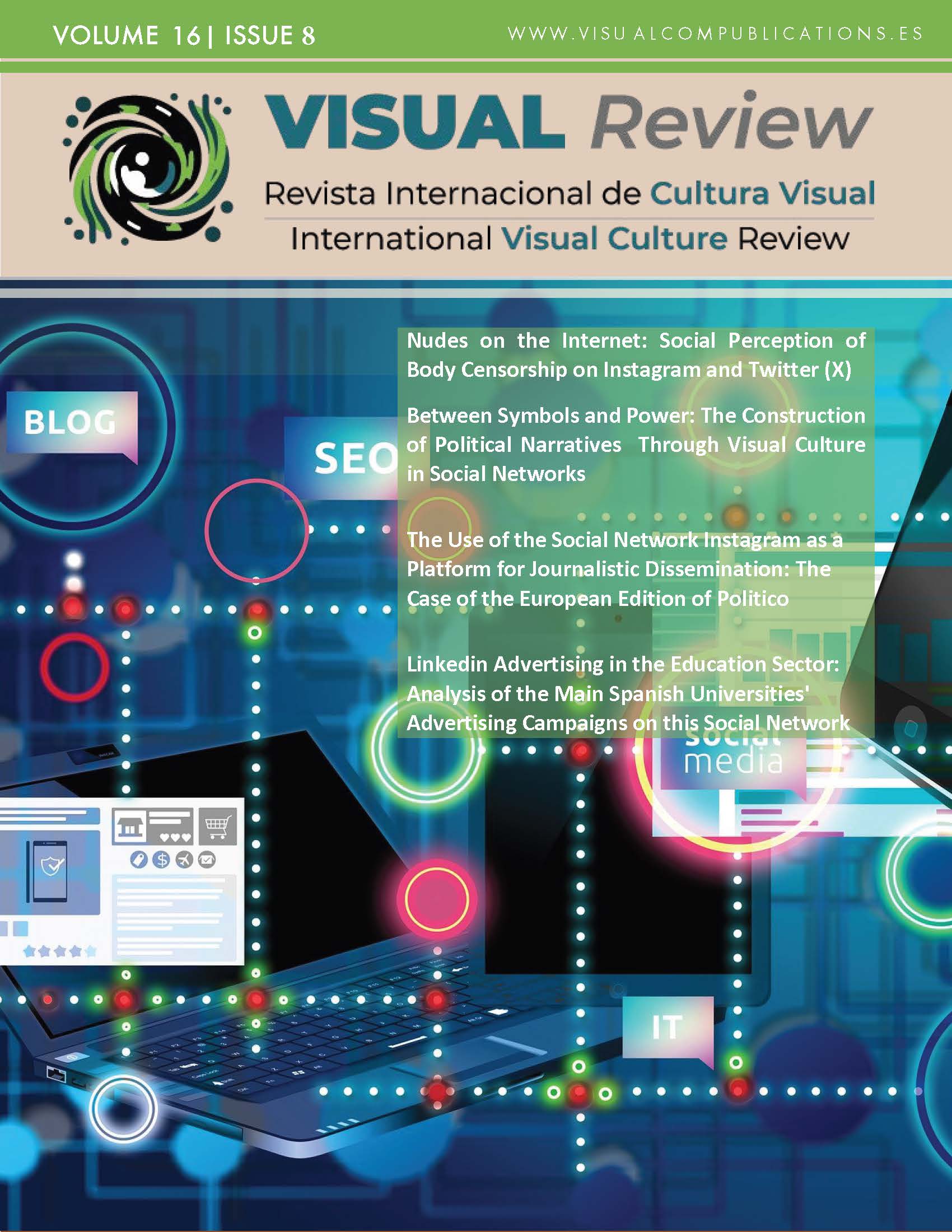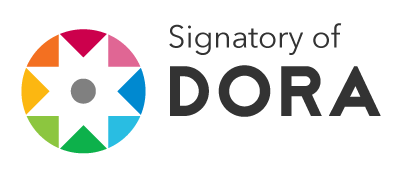The Purpose of Brands in Small and Medium Sized Enterprise.
Communication analysis of SMEs in Instagram during 2023 in Spain.
DOI:
https://doi.org/10.62161/revvisual.v16.5415Keywords:
SMEs, Purpose, Contents, Instagram, Communication, Brands, RSCAbstract
Purpose is a pillar that SMEs must work on and communicate to adapt to new needs and trends that require meaning and awareness. Using quantitative methodology, the content generated on Instagram will be analyzed for a month by SMEs awarded by the Spanish Chamber of Commerce in 2023 that actively use this social network. Revealing data is extracted that indicates the importance that these brands give to the attributes of their products and/or services, moving away from the effective communication of the purpose and questioning the relevance that this concept really acquires in their actions
Downloads
Global Statistics ℹ️
|
642
Views
|
457
Downloads
|
|
1099
Total
|
|
References
Aaker, D. y Myers, J. (1984). Management de la publicidad. Editorial Hispano Europea.
Abadía, J. M. M., & Pajares, J. C. H. (1989). Responsabilidad Social Corporativa e Información de Sostenibilidad en La Pyme. Revista Internacional de la Pequeña y Mediana Empresa 1, (2), 23-41.
Alhamami, A. A.; Hashim, N. A.; Hamid, R. A.; & Hamid, S. N. A. (2021). The adoption of social media by small and medium enterprise: a systematic literature review. Indonesian Journal of Electrical Engineering and Computer Science, 24(2), 1220-1227. DOI: 10.11591/ijeecs.v24.i2.pp1220-1227 DOI: https://doi.org/10.11591/ijeecs.v24.i2.pp1220-1227
Alloza, Á., Carreras E. y Carreras A. (2013). Reputación Corporativa. LID Editorial Empresarial.
Amat, O. (2020). Las empresas con propósito más allá de los beneficios van mejor. Harvard Deusto Business Review, (300), 11.
Amstrong, G. & Kotler, P. (2003). Marketing: an introduction. Pearson Education.
Babé, I. (2022). La importancia de que las empresas españolas tengan un propósito. El Economista. Recuperado de https://lc.cx/VV0hXQ
Benavides, J. y Fernández-Blanco, E. (2022). La nueva publicidad y su incidencia en la comunicación y los medios. Eunsa.
Bodaghi, A., & Oliveira, J. (2022). A longitudinal analysis on Instagram characteristics of Olympic champions. Social Network Analysis and Mining, 12, Art. 3. https://doi.org/10.1007/s13278-021-00838-9 DOI: https://doi.org/10.1007/s13278-021-00838-9
Bowen, H. R. (1953). Social Responsibilities of the Businessman. New York: Harper & Row.
Brennan, R., & Croft, R. (2012). The use of social media in B2B marketing and branding: An exploratory study. Journal of customer behaviour, 11(2), 101 115. https://doi.org/10.1362/ 147539212X13420906144552 DOI: https://doi.org/10.1362/147539212X13420906144552
Caldeira, S. P. (2016). Identities in Flux: An Analysis to Photographic Self-Representation on Instagram. Observatorio (OBS*) Journal, 10(3), 135-158. https://doi.org/10.15847/obsOBS10320161031 DOI: https://doi.org/10.15847/obsOBS10320161031
Chrisman J. y Archer R. (1984). Small Business Social Responsibility: Some Perceptions DOI: https://doi.org/10.1177/104225878400900206
and Insights. American Journal of Small Business, 9(2), 46-58.
Clegg, S., Cunha, M. P. E., Rego, A., & Santos, F. (2021). ‘Open purpose’: Embracing organizations as expressive systems. Organization Theory, 2(4). https://doi.org/10.1177/26317877211054860 DOI: https://doi.org/10.1177/26317877211054860
Corporate Excellence (2023). Approaching the future: tendencias en reputación y gestión de intangibles. Corporate Excellence & Canvas Sostenible.
Currás, R., & Küster, I. (2005). Internet como herramienta de marketing de relaciones en España. Estudio de las principales empresas españolas. Investigación y Marketing, 84, 29-40.
Dhanesh, G., Duthler, G. & Li, K. (2022). Social media engagement with organization-generated content: Role of visuals in enhancing public engagement with organizations on Facebook and Instagram. Public Relations Review, 48(2), 102174. https://doi.org/10.1016/j.pubrev.2022.102174. DOI: https://doi.org/10.1016/j.pubrev.2022.102174
Echebarría, K. (2020). La empresa como proyecto de transformación social. Harvard Deusto Business Review, (300), 6-7. Recuperado de: https://bit.ly/3H95V1j
Edelman. (2024). Edelman Trust Barometer: Global Report. Edelman Trust Institute. Recuperado de https://www.edelman.com/trust/2024/trust-barometer
Esumer, I. U. (2017). B2B y B2C. Institución Universitaria Esumer. Recuperado de http://repositorio.esumer.edu.co/jspui/handle/esumer/1914
Escudero, J. (2023). ¿Cuáles son los principales problemas a los que se enfrenta el emprendedor? (y sus soluciones). Emprendedores. Recuperado de https://emprendedores.es/gestion/problemas-emprendedor/
European Commission. (2023). European Comission. Retrieved February 8, 2024, from https:// ec.europa.eu/commission/presscorner/detail/es/qanda_23_1693
Feher, K. (2021). Digital identity and the online self: Footprint strategies: an exploratory and comparative research study. Journal of Information Science, 47(2), 192–205. https://doi.org/10.1177%2F0165551519879702 DOI: https://doi.org/10.1177/0165551519879702
Fernández, J. L. F., Delgado, J. B., Polo, R. G., Moreno, F. S. M., & Almagro, J. J. (2014). Repensar la responsabilidad social: Una mirada desde los dirse. Asociación Española de Directivos de Responsabilidad Social (DIRSE). Recuperado de https://www.dirse.es/sites/default/ files/libro_dirse.pdf
Fernández-Blanco, E. y Hernández-Zelaya, S. (2021). El propósito como nueva estrategia publicitaria: análisis de la crisis sanitaria de la COVID19. Comunicando en el siglo XXI: Claves y tendencias (163-174). Tirant Lo Blanch.
Fernández-Gómez, J.D., Gordillo-Rodríguez, M.T., Pacheco-Barriga, L. y Fernández-Blanco, E., (2023). Marcas y propósito. Análisis de las estrategias digitales en Twitter de las empresas más reputadas en España. Revista Latina de Comunicación Social, nº. 81 (mayo): 44-75. https://www.doi.org/10.4185/RLCS-2022-XXXX DOI: https://doi.org/10.4185/rlcs-2023-2005
Fernández-Martínez, J. L. (2020). ¿Cuál debe ser el propósito de una compañía?. Harvard Deusto Business Review, (300), 10.
Freeman, R. E. (1984). Strategic management: A stakeholder approach. Pittman Publishing.
Frias, M. V., & Duque, M. V. (2014). Comparación entre las estrategias de marketing B2C y B2B, un estudio cuantitativo y cualitativo. Institución Universitaria Esumer 54, 91-100. Recuperado de http://repository.cesa.edu.co/bitstream/handle/10726/1381/TMM00322. pdf?sequence=1
Friedman, M. (1970). A Friedman doctrine: The social responsibility of business is to increase its profits. The New York Times Magazine, 13(1970), 32-33.
García de Castro, A. (2020). Gestionar en la incertidumbre y mantener el rumbo. Harvard Deusto Business Review, (300), 12.
George, G., Haas, M. R., McGahan, A. M., Schillebeeckx, S. J. D., & Tracey, P. (2023). Purpose in the For-Profit Firm: A Review and Framework for Management Research. Journal of Management, 49(6), 1841-1869. https://doi.org/10.1177/01492063211006450 DOI: https://doi.org/10.1177/01492063211006450
Ghazwani, S. S., and Alzahrani, S. (2024). The Use of Social Media Platforms for Competitive Information and Knowledge Sharing and Its Effect on SMEs’ Profitability and Growth through Innovation. Sustainability, 16(1), 106. https://doi.org/10.3390/su16010106 DOI: https://doi.org/10.3390/su16010106
GlobeScan & Sustainable Brands (2016). The Public on Purpose. Insights from a Global Study on Corporate Purpose. Executive Summary. GlobesScan. Recuperado de https://lc.cx/tdEcIV
Gobierno de España. (2024). Marco estratégico PYME. Recuperado el 1 de febrero de 2024, de https://lc.cx/At8ueA
Gómez, M., López, C. & Molina, A (2019). An integrated model of social media brand engagement. Computers in Human Behavior, 96, 196-206. https://doi.org/10.1016/j.chb.2019.01.026. DOI: https://doi.org/10.1016/j.chb.2019.01.026
Graham, T., Broersma, M., Hazelhoff, K., & van’t Harr, G. (2013). Between broadcasting political messages and interacting with voters. The use of Twitter during the 2010 UK general election campaign. Information, Communication & Society, 16(5), 692-716. http://dx.doi.org/10.1080/1369118X. 2013.785581 DOI: https://doi.org/10.1080/1369118X.2013.785581
Guesalaga, R. (2016). The use of social media in sales: Individual and organizational antecedents, and the role of customer engagement in social media. Industrial marketing management, 54, 71-79. https://doi.org/10.1016/j.indmarman.2015.12.002 DOI: https://doi.org/10.1016/j.indmarman.2015.12.002
Harrison, T. (1989). A Handbook of Advertising Techniques. Kogan Page.
Harrison, B. (2002). Photographic visions and narrative inquiry. Narrative Inquiry, 12(1), 87-111. https://doi.org/10.1075/ni.12.1.14har DOI: https://doi.org/10.1075/ni.12.1.14har
Harun, Z.; Tajudeen, F. P. (2021). Instagram marketing: understanding the adoption factors for small and medium enterprises. International Journal of Internet Marketing and Advertising (IJIMA), 15(5/6), 527-549. DOI:10.4018/IJTD.2020070103 DOI: https://doi.org/10.1504/IJIMA.2021.10041929
Henisz, W. J. (2023). The value of organizational purpose. Strategy Science, 8(2), 121-321. DOI: 10.1287/stsc.2023.0195 DOI: https://doi.org/10.1287/stsc.2023.0195
Heukamp, F. (2020). El propósito, inspiración para definir la estrategia. Harvard Deusto Business Review, (300), 8.
IAB Spain (2023). Estudio redes sociales 2023. Recuperado el 27 de febrero de 2024 de https://iabspain.es/estudio/estudio-de-redes-sociales-2023/
Iankova, S., Davies, I., Archer-Brown, C., Marder, B., & Yau, A. (2019). A comparison of social media marketing between B2B, B2C and mixed business models. Industrial Marketing Management, 81, 169-179. https://doi.org/10.1016/j.indmarman.2018.01.001 DOI: https://doi.org/10.1016/j.indmarman.2018.01.001
Innuba. (2024). Tiempo de ser, no de parecer. Newsletter 18. Innuba.
Instituto Nacional de Estadística. (2020). Estadística experimental – Coyuntura demográfica de empresas. Recuperado el 2 de febrero de 2024, de https://www.ine.es/prensa/experimental_codem.pdf
Iyer, S., Kabanda, S., & Al-Haidari, N. N. (2021). The use of social media by SMEs. 27th Annual Americas Conference on Information Systems, AMICIS, 25. https://lc.cx/XJ6ZPk
Kadir, S. & Shaikh, J. M. (2023). The effects of e-commerce businesses to small-medium enterprises: Media techniques and technology. In AIP Conference Proceedings, 2643(1). Publishing. DOI:10.1063/5.0110893 DOI: https://doi.org/10.1063/5.0110893
Krippendorff, K. (2004). Content Analysis: An Introduction to Its Methodology. Sage.
Leal Paredes, M. S., & Arias Ibarra, B. P. (2021). Liderazgo ético para el fortalecimiento de una cultura organizacional en las Pymes. Podium, (40), 21-40. https://doi.org/10.31095/podium.2021.40.2 DOI: https://doi.org/10.31095/podium.2021.40.2
Lee, M.Y., & Edmondson, A.C. (2017). Self-managing organizations: Exploring the limits of less-hierarchical organizing. Research in Organizational Behavior, 37, 35-58. DOI:10.1016/j.riob. 2017.10.002 DOI: https://doi.org/10.1016/j.riob.2017.10.002
Lee, E., Lee, J. A., Moon, J. H. & Sung, Y. (2015). Pictures speak louder than words: Motivations for using Instagram. Cyberpsychology, Behavior, and Social Networking, 18(9), 552–556. DOI: 10.1089/cyber.2015.0157 DOI: https://doi.org/10.1089/cyber.2015.0157
Lleó, A., Chinchilla, N., Ruiz-Pérez, F., Rey, C., & Alloza, A. (2022). Purpose Strength Project: evidencias empíricas sobre la implantación del propósito corporativo. IESE Business School.
López-Aza, C. (2020). Activismo de marca. Una nueva estrategia de marketing. Pirámide.
Losada-Vázquez, A. (2022). Organizational learning at purpose-driven enterprise: Action-research model for leadership improvement. Sustainability, 14(3), 1301. DOI:10.3390/su14031301 DOI: https://doi.org/10.3390/su14031301
Macready, H. (2023). Con qué frecuencia publicar en redes sociales en 2024. Social Media Marketing & Management Dashboard. Recuperado el 2 de febrero de 2024, de https://lc.cx/ookHJh
Manfredi-Sánchez, J. L. (2019). El activismo político de las marcas. Communication & Society, 32(4), 343-359. DOI: 343-359. 10.15581/003.32.4.343-359 DOI: https://doi.org/10.15581/003.32.4.343-359
Ministerio de Industria, Comercio y Turismo. (2022). Informe Anual de la PYME 2022. Gobierno de España. Recuperado el 2 de febrero de 2024, de https://lc.cx/AFiH0i
Ministerio de Industria, Comercio y Turismo. (2019). Marco Estratégico en política de pyme 2030. Recuperado el 2 de febrero de 2024, de https://lc.cx/dzEp1d
Minett, S. (2001). B2B Marketing: A radically different approach for business-to- business marketers (2da ed.). Financial Times Prentice Hall.
Murillo D. y Lozano J. (2006). SMEs and CSR: An Approach to CSR in their Own Words. Journal of Business Ethics, nº 67(3), 227-240. https://doi.org/10.1007/s10551-006-9181-7 DOI: https://doi.org/10.1007/s10551-006-9181-7
Nurfarida, I. N., Hermawan, A., y Restuningdiah, N. (2023). Social customer relationship management and business performance: Evidence from small and medium enterprises. Quality-Access to Success, 24(197), 141-147. DOI: 10.47750/QAS/24.197.16 DOI: https://doi.org/10.47750/QAS/24.197.16
Ortiz, C. C., Contreras, F. G., & Parejo, A. G. (2020). Responsabilidad Social Corporativa (RSC): impacto en pequeñas y medianas empresas españolas. Revista Venezolana de Gerencia: RVG, 25(91), 1056-1075. DOI: https://doi.org/10.37960/rvg.v25i91.33182
Pacheco-Barriga, L. & Fernández-Blanco, E. (2022). Una aproximación al estudio de la percepción del consumidor ante el activismo de marca. En T. Hidalgo-Marí, J. Herrero Gutiérrez, J. Segarra Saavedra y A. Bernabeu-Serrano (Coords.), La comunicación desde una perspectiva global: El camino hacia la alfabetización mediática (pp. 17-30). Fragua.
Paredes, M., & Cardona, J. (2014). Segmentación de mercados. Revista Académica Eco, 8 (9), 75-94. https://lc.cx/UX0QVl
Pérez, A. A. H. (2020). Etiquetas macho: Cultura y propósito en la pyme. Harvard Deusto business review, (300), 80-89.
Percy, L., y Elliot, R. (2009). Strategic Advertising Management. Oxford University Press.
Pratt, M. G., & Hedden, L. N. (2023). Accounts and accountability: On organizational purpose, organizational identity, and meaningful work. Strategy Science, 8(2), 121-321. DOI:10.1287/stsc.2023.0189 DOI: https://doi.org/10.1287/stsc.2023.0189
Ramos-Serrano, M., Fernández Gómez, J. D. y Pineda, A. (2018). Follow the closing of the campaign on streaming: The use of Twitter by Spanish political parties during the 2014 European elections. New Media and Society, 20(1), 122-140. https://doi.org/10.1177/14614448166607 DOI: https://doi.org/10.1177/1461444816660730
Rettberg, J. W. (2018). Self-presentation in Social Media. Burgess, J.; Marwick, A. y Poell, T. (Eds.), The SAGE Handbook of Social Media (pp. 429-443). SAGE. DOI: https://doi.org/10.4135/9781473984066.n24
Rey, C., San Cristóbal, J. y Almandoz, J. (2019). The New Logic of Purpose Within the Organization. En Rey, C., Bastons, M. y Sotok, P. (eds.) Purpose-driven Organizations. Management Ideas for a Better World (pp. 3-15). Palgrave Macmillan. DOI: 10.1007/978-3-030-17674-7_1 DOI: https://doi.org/10.1007/978-3-030-17674-7_1
Rodriguez Ardura, V. (2020). Propósito y valores: Cómo hacer que la cultura de una organización florezca. Profit Editorial.
Ruiz, F. (2020). La década del propósito, el momento de trascender. Harvard Deusto Business Review, (300), 14.
Senanu, B., Anning-Dorson, T. and Tackie, N. N. (2023). Social media insights for non-luxury fashion SMEs in emerging markets: evidence from young consumers. Journal of Fashion Marketing and Management, 27 (6), 965-987. https://doi.org/10.1108/JFMM-02-2022-0026 DOI: https://doi.org/10.1108/JFMM-02-2022-0026
Serafinelli, Elisa & Villi, Mikko. (2017). Mobile Mediated Visualities An Empirical Study of Visual Practices on Instagram. Digital Culture & Society, vol. 3, no. 2, 2017, pp. 165-182. https://doi.org/10.14361/dcs-2017-0210 DOI: https://doi.org/10.14361/dcs-2017-0210
Sinek, S. (2018). Empieza con el Porqué. Como los grandes líderes motivan a actuar. Empresa Activa.
Statista (2024). Instagram in Spain, 2023. Recuperado el 27 de Febrero de 2024 de https://lc.cx/OKbrye
Tellis, G. (1998). Advertising and Sales Promotion Strategy. Addison-Wesley.
Van Dijck, J. (2008). Digital Photography: Communication, Identity, Memory. Visual Communication, 7(1), 57-76. https://doi.org/10.1177/1470357207084865 DOI: https://doi.org/10.1177/1470357207084865
Van Dijck, J. (2013). The Culture of Connectivity: A Critical History of Social Media. Oxford University Press. https://doi.org/10.1093/acprof:oso/9780199970773.001.0001 DOI: https://doi.org/10.1093/acprof:oso/9780199970773.001.0001
Vázquez, D. G., Álvarez, J. L. L., & Juárez, L. E. V. (2020). La responsabilidad social corporativa en el contexto de las pymes. AECA: Revista de la Asociación Española de Contabilidad y Administración de Empresas, (132), 42-45.
Voorhees, C. M., Fombelle, P. W., & Bone, S. A. (2020). Don’t Forget About the Frontline Employee During the COVID-19 Pandemic: Preliminary Insights and a Research Agenda on Market Shocks. Journal of Service Research, 23(4), 396-400. https://doi.org/10.1177/1094670520944606 DOI: https://doi.org/10.1177/1094670520944606
Wind, Y. (1982). Product Policy: Concepts, Methods, and Strategy. Addison Wesley
Downloads
Published
How to Cite
Issue
Section
License
Copyright (c) 2024 VISUAL REVIEW. International Visual Culture Review / Revista Internacional de Cultura Visual

This work is licensed under a Creative Commons Attribution-NoDerivatives 4.0 International License.
Those authors who publish in this journal accept the following terms:
-
Authors retain copyright.
-
Authors transfer to the journal the right of first publication. The journal also owns the publishing rights.
-
All published contents are governed by an Attribution-NoDerivatives 4.0 International License.
Access the informative version and legal text of the license. By virtue of this, third parties are allowed to use what is published as long as they mention the authorship of the work and the first publication in this journal. If you transform the material, you may not distribute the modified work. -
Authors may make other independent and additional contractual arrangements for non-exclusive distribution of the version of the article published in this journal (e.g., inclusion in an institutional repository or publication in a book) as long as they clearly indicate that the work was first published in this journal.
- Authors are allowed and recommended to publish their work on the Internet (for example on institutional and personal websites), following the publication of, and referencing the journal, as this could lead to constructive exchanges and a more extensive and quick circulation of published works (see The Effect of Open Access).













